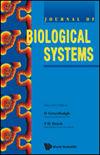具有连续阈值捕捞政策的渔业模型的动力学及其对保护和管理的影响
IF 1.5
4区 数学
Q3 BIOLOGY
引用次数: 1
摘要
由于不可持续的捕捞,全球海洋鱼类数量正在下降。有效的捕捞政策可以保护过度捕捞的种群免受可能的灭绝。在这项研究中,我们使用了一个数学模型,其特征是草食性鱼类的密度依赖性避难所保护,在存在广泛入侵鱼类的情况下表现出抗捕食者的反应。这种反捕食者的行为导致了捕食者密度依赖性的食草动物繁殖力降低。该模型假设草食性鱼类采用连续阈值捕捞策略(CTHP),并使用单位努力捕获量(CPUE)假设来捕捞入侵鱼类。只有当草食性鱼类的密度超过特定阈值时,CTHP才允许捕捞草食性鱼,从而确保草食性鱼群的长期可持续性。研究了稳态解的存在性和稳定性以及模型的分岔问题。我们的研究表明,对草食性鱼类的担忧程度和捕鱼努力将对系统的稳定性发挥重要作用。我们检验了仿生平衡的存在性,然后利用庞特里亚金最大值原理研究了收获策略的动态优化。我们讨论了有效管理可持续渔业的不同补贴和税收政策。我们使用数值模拟来比较基于最大可持续产量(MSY)、最大经济产量(MEY)和最佳可持续产量(OSY)的收获政策对应的收入,以推断生态可持续和经济可行的收获政策。本文章由计算机程序翻译,如有差异,请以英文原文为准。
DYNAMICS OF A FISHERY MODEL WITH CONTINUOUS THRESHOLD HARVESTING POLICY AND ITS LEVERAGE FOR CONSERVATION AND MANAGEMENT
There is a global decline in marine fish abundance due to unsustainable harvesting. An effective harvesting policy can protect the overfished population from possible extinction. In this study, we used a mathematical model characterized by density-dependent refuge protection for herbivorous fish, exhibiting an anti-predator response in presence of a generalist invasive fish. The anti-predator behavior entails predator density-dependent reduced fecundity of the herbivorous fish. The model assumes a continuous threshold harvesting policy (CTHP) for the herbivorous fish and uses the catch-per-unit-effort (CPUE) hypothesis for harvesting the invasive fish. The CTHP allows harvesting of the herbivorous fish only when the density of the herbivorous fish exceeds a specified threshold value, thus ensuring the long-term sustainability of the herbivorous fish stock. The existence and stability of steady-state solutions and the bifurcations of the model are investigated. Our study reveals that the level of apprehension of the herbivorous fish and fishing efforts will play a significant role in the stability of the system. We examine the existence of the bionomic equilibrium and then study the dynamic optimization of the harvesting policy by employing Pontryagin’s maximum principle. We discuss different subsidies and tax policies for the effective management of a sustainable fishery. We use numerical simulations to compare the revenues corresponding to the harvest policies based on maximum sustainable yield (MSY), maximum economic yield (MEY), and optimal sustainable yield (OSY) for inferring an ecologically sustainable and economically viable harvesting policy.
求助全文
通过发布文献求助,成功后即可免费获取论文全文。
去求助
来源期刊
CiteScore
2.80
自引率
12.50%
发文量
31
审稿时长
1 months
期刊介绍:
The Journal of Biological Systems is published quarterly. The goal of the Journal is to promote interdisciplinary approaches in Biology and in Medicine, and the study of biological situations with a variety of tools, including mathematical and general systems methods. The Journal solicits original research papers and survey articles in areas that include (but are not limited to):
Complex systems studies; isomorphies; nonlinear dynamics; entropy; mathematical tools and systems theories with applications in Biology and Medicine.
Interdisciplinary approaches in Biology and Medicine; transfer of methods from one discipline to another; integration of biological levels, from atomic to molecular, macromolecular, cellular, and organic levels; animal biology; plant biology.
Environmental studies; relationships between individuals, populations, communities and ecosystems; bioeconomics, management of renewable resources; hierarchy theory; integration of spatial and time scales.
Evolutionary biology; co-evolutions; genetics and evolution; branching processes and phyllotaxis.
Medical systems; physiology; cardiac modeling; computer models in Medicine; cancer research; epidemiology.
Numerical simulations and computations; numerical study and analysis of biological data.
Epistemology; history of science.
The journal will also publish book reviews.

 求助内容:
求助内容: 应助结果提醒方式:
应助结果提醒方式:


